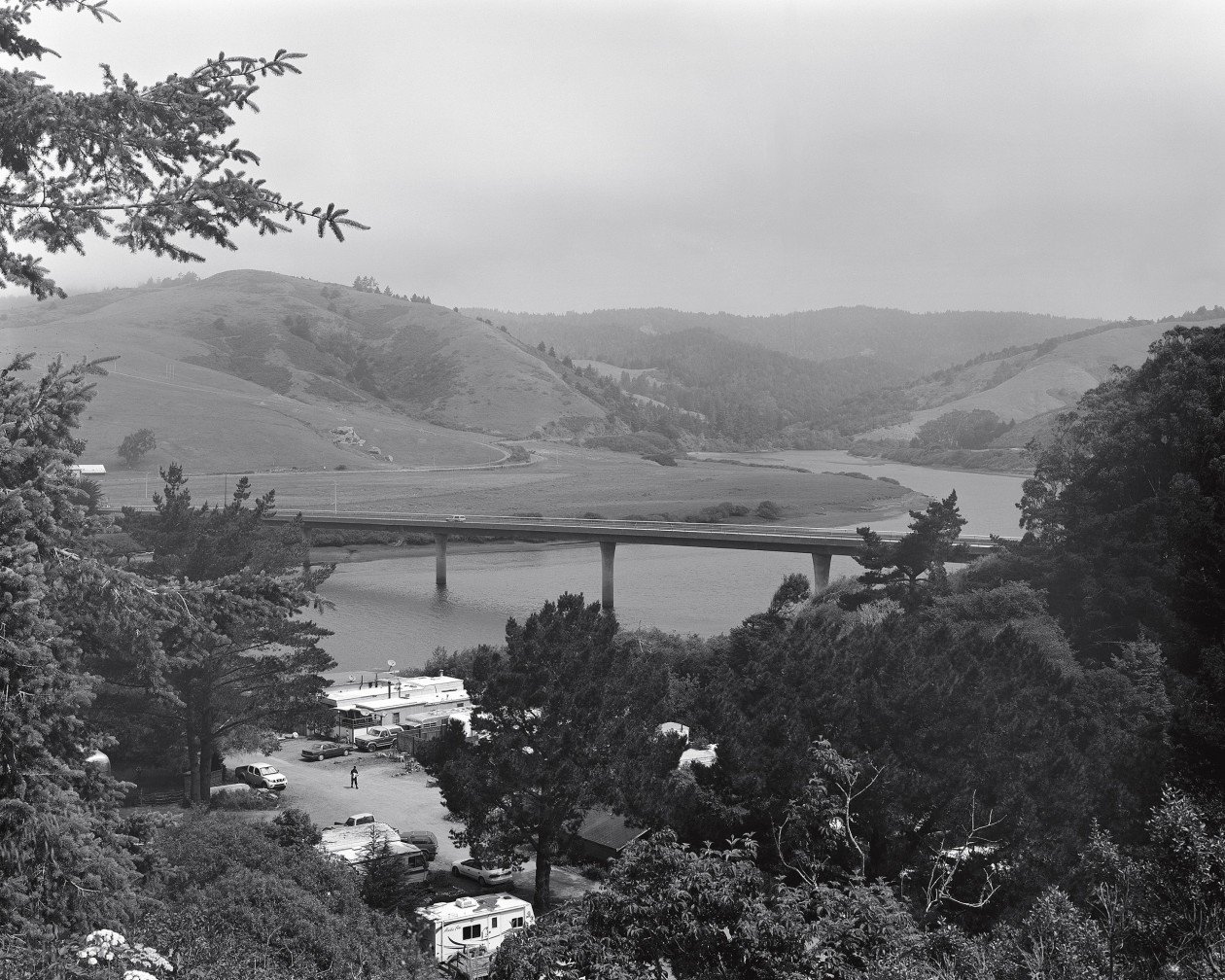
The story has all the trappings of a viral Netflix documentary: In 2002, a man with a skull mask, several guns, and a sword broke into a remote, 2,700-acre campground outside of San Francisco. He called himself the Phantom Patriot, and he was on a mission to stop what he believed was a secret cult of rich men sacrificing babies to an owl king.
After a standoff with local law enforcement, the man, whose real name was Richard McCaslin, was taken into custody. No one was hurt. McCaslin claimed to have been inspired by Alex Jones, the incendiary radio personality behind InfoWars. Two years prior, Jones released a documentary that claimed to have uncovered the secret rituals of Bohemian Grove, an exclusive retreat where the world’s richest and most powerful men gather every year.
Now, more than 17 years later, British photographer Jack Latham has revisited this event for Parliament of Owls, a fascinating new book due to be published in August that looks at conspiracy culture and the role that images play in perpetuating it.
Jack Latham, Phantom Patriot (2019). Courtesy of the artist.
The idea for the project first came to the artist after wrapping up his last book, Sugar Paper Theories, which explored a mysterious murder case in Iceland that resulted in the wrongful conviction of six people. (The trial was reheard after the release of the book; five of the six people accused were exonerated.)
“The thing about that case was that it attracted a lot of conspiracies, so I found myself socializing a lot with theorists,” Latham recently told artnet News. “Bohemian Grove is one of the greatest hits when it comes to conspiracies.”
Indeed, for generations, Bohemian Grove has played into the imaginations of many. It’s not hard to see why. A secret (yet very real) club located deep in the towering California redwoods, where presidents, CEOs, artists, and other powerful men meet every year—the concept is bound to inspire wild speculation.
After lengthy investigation, however, Latham found that the reality of the club is just not that exciting. “The more you learn about Bohemian Grove, the less interesting it actually is,” he says. “It’s where the rich wear shorts and sandals and walk around talking about money. That’s might be a troubling idea unto itself, but it’s not as interesting as sacrificing babies.”
Jack Latham, Mary Moore as Nixon (2019). Courtesy of the artist.
The club lives at the heart of the Parliament of Owls, but only through implication. In the end, Latham wasn’t able to photograph the interior of the grove—no one is. But he was perhaps even more interested in training his lens on the people and objects who have been pulled into the grove’s orbit.
Forest scenes, lonely hotels, and abandoned theaters in Monte Rio—the nearest town that, because of its opioid-induced poverty level, stands in dramatic contrast to the club’s elitism—populate the pages, as do portraits of locals. Interspersed throughout are stark shots of owls—a reference to the grove’s chosen symbol, but also, Latham notes, an acknowledgement of those watching the people whose privilege has lulled them into a false sense of privacy.
Latham also tracked down McCaslin and met him at his home in Nevada (where, in true conspiracist fashion, he tried to convince him that Queen Elizabeth was secretly a lizard). He photographed the onetime vigilante in his garage, dressed up in his Phantom Patriot costume, crossbow in hand. (McCaslin died shortly thereafter.) He also visited Mike Hanson, a man who assisted in the first infiltration of the grove and has since built a mini “museum” in Alex Jones’s honor.
Jack Latham, Main Stage at the Mitchell Brothers O’Farrell Theatre, San Francisco (2019). Courtesy of the artist.
Hanson tipped off Latham as to where Jones himself might be located—an address that is far harder to come by than that of the Bohemian Grove. Latham wound up at a walled compound in a remote part of Texas. A giant satellite dish sat on the roof. A security guard at the entrance claimed not to know anything about Jones or InfoWars and told the photographer to get lost.
So he took a picture of the outside of the building instead—at which point he found himself indulging the same invasive, voyeuristic impulse that led Jones to crash the grove nearly two decades prior.
Latham is aware of the irony. (He was also aware of the ways in which the act differed from Jones’s own.) In some ways, he said, that was the point of the whole project.
“I think one of the reasons I’m so drawn to conspiracy theorists as a subject matter,” Latham explains, “is that the act of creating conspiracy is conceptually linked to photography. Theorists will remove things from their context and sequence them in a way that creates alternative narratives, fulfills their vision of an event. I think photographers do the same thing. We create these narratives that are completely speculative and present them as if they’re real. That’s what I’m flirting with the project.”
See more photographs from Parliament of Owls below.
Jack Latham, Viewing Platform (2019). Courtesy of the artist.
Jack Latham, Workmen’s Locker, Northwood Golf Club (2019). Courtesy of the artist.
Jack Latham, Great Horned Owl (2019). Courtesy of the artist.
Jack Latham, Monte Rio cinema #4 (2019). Courtesy of the artist.
Jack Latham, Protest cabin #3, Camp Meeker (2019). Courtesy of the artist.
Jack Latham, Pink Elephant, Monte Rio (2019). Courtesy of the artist.
Parliament of Owls (2019) is available for pre-order now through Here Press. An exhibition of Latham’s work from the book opened this week at TJ Boulting in London.